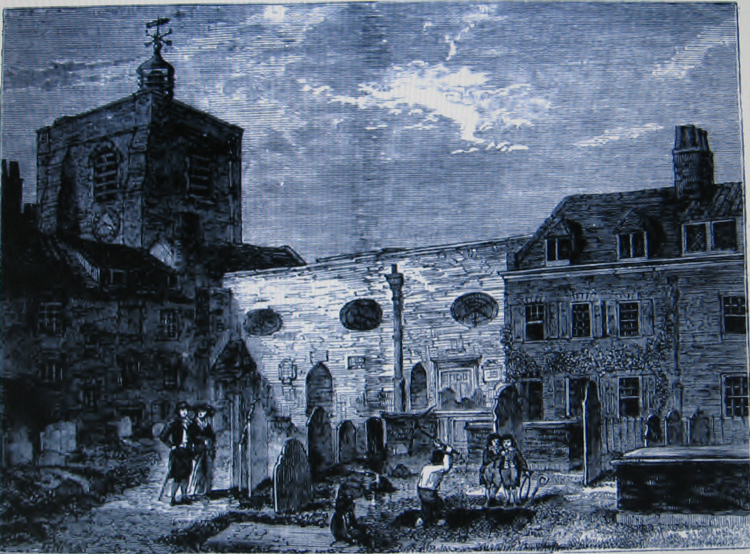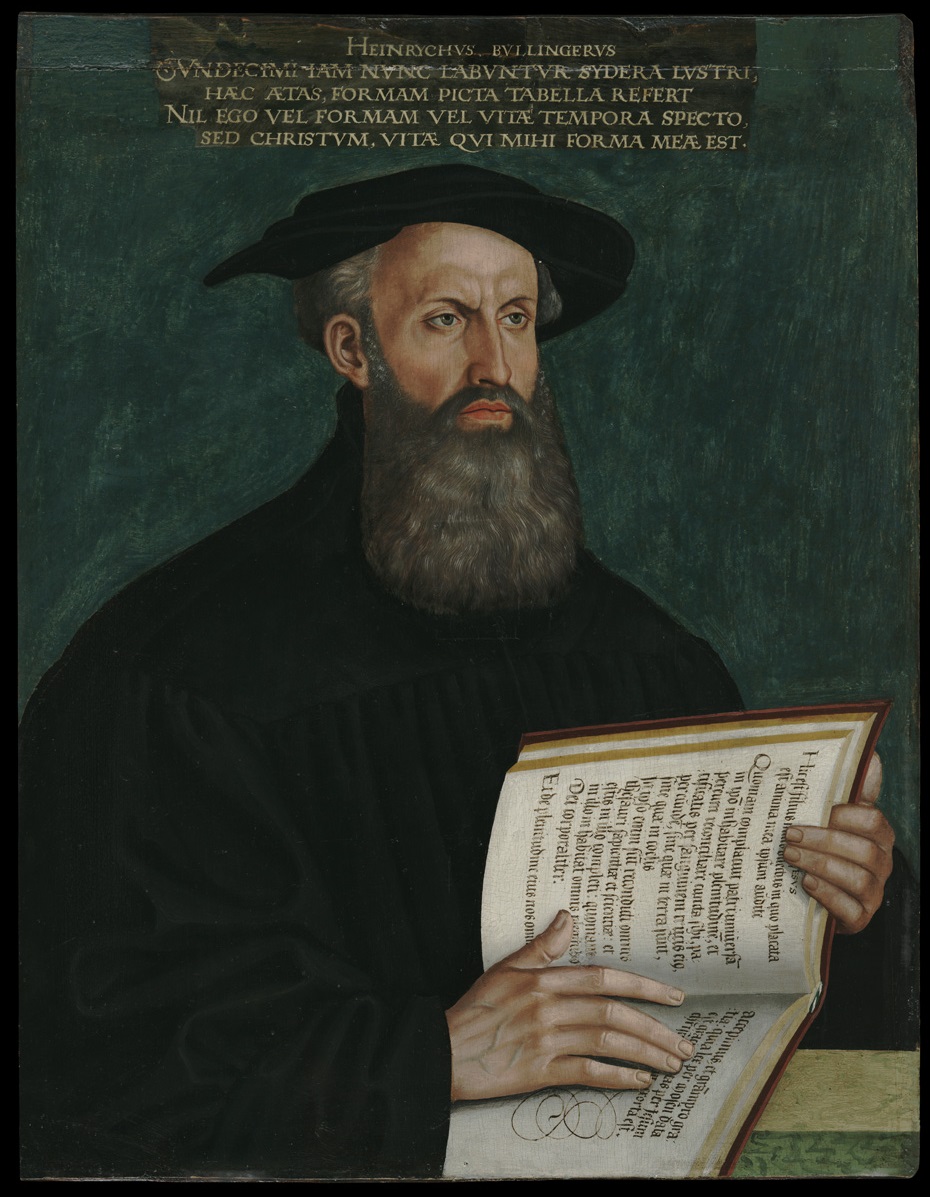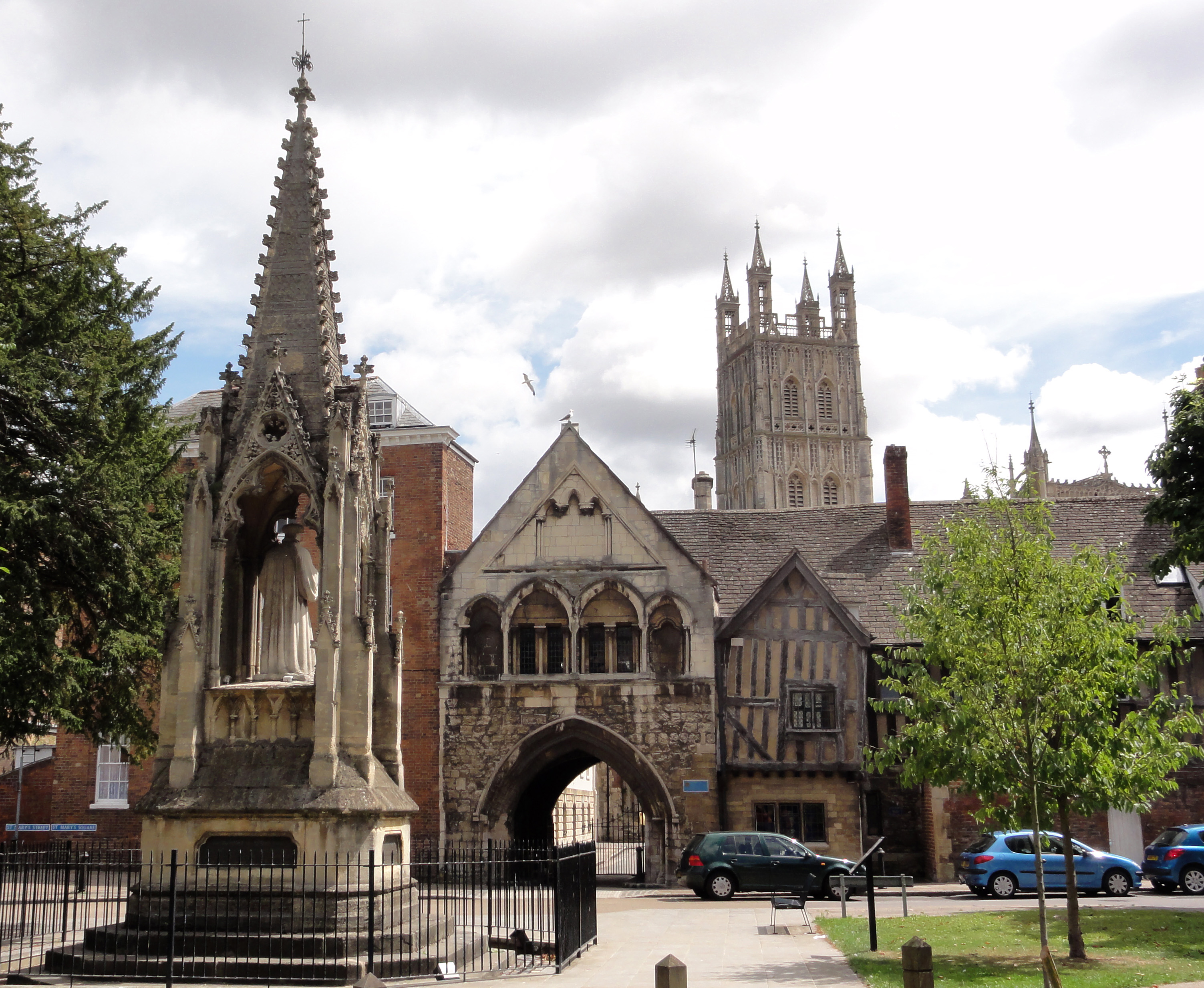|
John Feckenham
John Feckenham (c. 1515 – October 1584), also known as John Howman of Feckingham and later John de Feckenham or John Fecknam, was an English churchman, the last abbot of Westminster. Under Henry VIII and Edward VI Feckenham was born at Feckenham, Worcestershire, into a family of substantial yeomen. The family name was Howman, but as a monk he chose to be known by the name of his place of origin. Thomas Fuller notes in ''Worthies of England'' that Feckenham was the last clergyman to be "locally surnamed". His early education came from the parish priest, but he was sent at an early age to the cloister school at Evesham Abbey, and from there, at age eighteen, to Gloucester Hall, Oxford, as a Benedictine student. After taking his degree in arts, he returned to Evesham Abbey, and pursued a monastic profession. In 1537 he went back to Oxford and took his degree of Bachelor of Divinity on 11 June 1539. He was at Evesham at the time the abbey was surrendered on 27 January 1540 in the D ... [...More Info...] [...Related Items...] OR: [Wikipedia] [Google] [Baidu] |
Feckenham Forest
Feckenham Forest was a royal forest, centred on the village of Feckenham, covering large parts of Worcestershire and west Warwickshire. It was not entirely wooded, nor entirely the property of the King. Rather, the King had legal rights over game, wood and grazing within the forest, and special courts imposed harsh penalties when these rights were violated. Courts and the forest gaol were located at Feckenham and executions took place at Gallows Green near Hanbury. The legal origins are not recorded, but the area may have been used by Edward the Confessor and his predecessors for hunting.Humphreys Large areas of Worcestershire were subject to forest law at the time of the Domesday Book. Forest law itself evolved greatly in the early Norman period. The forest boundaries were extended greatly during the reign of Henry II, expanding from 34 to 184 square miles. The forest boundaries were reduced back in 1301. The wood was encroached to produce salt in Droitwich, and was quite reduc ... [...More Info...] [...Related Items...] OR: [Wikipedia] [Google] [Baidu] |
John Bell (Bishop Of Worcester)
John Bell (died 11 August 1556) was a Bishop of Worcester (1539–1543), who served during the reign of Henry VIII of England. Education Bell attending Balliol College, Oxford, and later at Cambridge where he took the degree of LL.B in 1504. Career Following this advancement he was promoted to other posts: ::"Canon and prebendary of the collegiate church of St. Stephen in Westminster Palace (until 1539);";Susan Wabuda, 'Bell, John (d. 1556)', ''ODNB'', Oxford University Press, 2004 ccessed 2004/ref> 1526 Collated: Warden of the church of Stratford-Upon-Avon, Preceptor of the hospital of St.Wulstans,Pearce, E.H., ''Hartlebury Castle'', SPCK, London 1926. pg. 101 Magister, Bachelor of Civil law, acta capitularia (Chapter act book) Coventry & Lichfield diocese''Fasti Ecclesiae Anglicanae'' 1300–1541, Volume I, Lincoln Diocese, compiled by H.P. F. King; Volume IV, Monastic Cathedrals (southern province), compiled by B. Jones; Volume V, St. Paul's, London, compiled by, Joyce M. H ... [...More Info...] [...Related Items...] OR: [Wikipedia] [Google] [Baidu] |
Elizabeth I Of England
Elizabeth I (7 September 153324 March 1603) was List of English monarchs, Queen of England and List of Irish monarchs, Ireland from 17 November 1558 until her death in 1603. Elizabeth was the last of the five House of Tudor monarchs and is sometimes referred to as the "Virgin Queen". Elizabeth was the daughter of Henry VIII and Anne Boleyn, his second wife, who was executed when Elizabeth was two years old. Anne's marriage to Henry was annulled, and Elizabeth was for a time declared Royal bastard, illegitimate. Her half-brother Edward VI ruled until his death in 1553, bequeathing the crown to Lady Jane Grey and ignoring the claims of his two half-sisters, the Catholic Church, Catholic Mary I of England, Mary and the younger Elizabeth, in spite of Third Succession Act, statute law to the contrary. Edward's will was set aside and Mary became queen, deposing Lady Jane Grey. During Mary's reign, Elizabeth was imprisoned for nearly a year on suspicion of supporting Protestant reb ... [...More Info...] [...Related Items...] OR: [Wikipedia] [Google] [Baidu] |
Lady Jane Grey
Lady Jane Grey ( 1537 – 12 February 1554), later known as Lady Jane Dudley (after her marriage) and as the "Nine Days' Queen", was an English noblewoman who claimed the throne of England and Ireland from 10 July until 19 July 1553. Jane was the great-granddaughter of Henry VII of England, Henry VII through his younger daughter Mary Tudor, Queen of France, Mary, and was a first cousin once removed of Edward VI. She had an excellent Renaissance humanism, humanist education, and a reputation as one of the most learned young women of her day. In May 1553, she married Lord Guildford Dudley, a younger son of Edward's chief minister John Dudley, Duke of Northumberland. In June 1553, Edward VI wrote his will, nominating Jane and her male heirs as successors to the Crown, in part because his half-sister Mary I of England, Mary was Catholic, while Jane was a committed Protestant and would support the reformed Church of England, whose foundation Edward laid. The will removed his half-si ... [...More Info...] [...Related Items...] OR: [Wikipedia] [Google] [Baidu] |
Church Of England
The Church of England (C of E) is the established Christian church in England and the mother church of the international Anglican Communion. It traces its history to the Christian church recorded as existing in the Roman province of Britain by the 3rd century and to the 6th-century Gregorian mission to Kent led by Augustine of Canterbury. The English church renounced papal authority in 1534 when Henry VIII failed to secure a papal annulment of his marriage to Catherine of Aragon. The English Reformation accelerated under Edward VI's regents, before a brief restoration of papal authority under Queen Mary I and King Philip. The Act of Supremacy 1558 renewed the breach, and the Elizabethan Settlement charted a course enabling the English church to describe itself as both Reformed and Catholic. In the earlier phase of the English Reformation there were both Roman Catholic martyrs and radical Protestant martyrs. The later phases saw the Penal Laws punish Ro ... [...More Info...] [...Related Items...] OR: [Wikipedia] [Google] [Baidu] |
Nicholas Ridley (martyr)
Nicholas Ridley ( – 16 October 1555) was an English Bishop of London (the only bishop called "Bishop of London and Westminster"). Ridley was one of the Oxford Martyrs burned at the stake during the Marian Persecutions, for his teachings and his support of Lady Jane Grey. He is remembered with a commemoration in the calendar of saints (with Hugh Latimer) in some parts of the Anglican Communion (Church of England) on 16 October. Early years and advancement (c.1500–50) Ridley came from a prominent family in Tynedale, Northumberland. He was the second son of Christopher Ridley, first cousin to Lancelot Ridley and grew up in Unthank Hall from the old House of Unthank located on the site of an ancient watch tower or pele tower. As a boy, Ridley was educated at the Royal Grammar School, Newcastle, and Pembroke College, Cambridge, where he proceeded to Master of Arts in 1525. Soon afterward he was ordained as a priest and went to the Sorbonne, in Paris, for further education. After ... [...More Info...] [...Related Items...] OR: [Wikipedia] [Google] [Baidu] |
Hugh Latimer
Hugh Latimer ( – 16 October 1555) was a Fellow of Clare College, Cambridge, and Bishop of Worcester during the Reformation, and later Church of England chaplain to King Edward VI. In 1555 under the Catholic Queen Mary I he was burned at the stake, becoming one of the three Oxford Martyrs of Anglicanism. Life Latimer was born into a family of farmers in Thurcaston, Leicestershire. His birthdate is unknown. Contemporary biographers including John Foxe placed the date somewhere between 1480 and 1494.He later recalled that "my father...kept me to schole" and he started his studies in Latin grammar at the age of four, but not much else is known of his childhood. He attended the University of Cambridge and was elected a fellow of Clare College on 2 February 1510. He received the Master of Arts degree in April 1514 and he was ordained a priest on 15 July 1515. In 1522, Latimer was nominated to the positions of university preacher and university chaplain. While carrying out his offic ... [...More Info...] [...Related Items...] OR: [Wikipedia] [Google] [Baidu] |
Queen Mary I
Mary I (18 February 1516 – 17 November 1558), also known as Mary Tudor, and as "Bloody Mary" by her Protestant opponents, was Queen of England and Ireland from July 1553 and Queen of Spain from January 1556 until her death in 1558. She is best known for her vigorous attempt to reverse the English Reformation, which had begun during the reign of her father, Henry VIII. Her attempt to restore to the Church the property confiscated in the previous two reigns was largely thwarted by Parliament, but during her five-year reign, Mary had over 280 religious dissenters burned at the stake in the Marian persecutions. Mary was the only child of Henry VIII by his first wife, Catherine of Aragon, to survive to adulthood. Her younger half-brother, Edward VI, succeeded their father in 1547 at the age of nine. When Edward became terminally ill in 1553, he attempted to remove Mary from the line of succession because he supposed, correctly, that she would reverse the Protestant reforms ... [...More Info...] [...Related Items...] OR: [Wikipedia] [Google] [Baidu] |
John Jewel
John Jewel (''alias'' Jewell) (24 May 1522 – 23 September 1571) of Devon, England was Bishop of Salisbury from 1559 to 1571. Life He was the youngest son of John Jewel of Bowden in the parish of Berry Narbor in Devon, by his wife Alice Bellamye, daughter of Richard Bellamye. He was educated under his uncle John Bellamy, rector of Hampton, and other private tutors until his matriculation at Merton College, Oxford, in July 1535. There he was taught by John Parkhurst, afterwards bishop of Norwich; but on 19 August 1539 he was elected scholar of Corpus Christi College, Oxford. He graduated BA in 1540 and MA in 1545, having been elected fellow of his college in 1542. He made some mark as a teacher at Oxford, and became after 1547 one of the chief disciples of Pietro Martire Vermigli, known in England as Peter Martyr. He graduated BD in 1552, and was made vicar of Sunningwell to the south of Oxford, and public orator of the university, in which capacity he had to compose a congr ... [...More Info...] [...Related Items...] OR: [Wikipedia] [Google] [Baidu] |
John Hooper (bishop)
John Roy Hooper (also Johan Hoper; c. 1495 – 9 February 1555) was an English churchman, Anglican Bishop of Gloucester, later of Worcester and Gloucester, a Protestant reformer and a Protestant martyr. A proponent of the English Reformation, he was executed for heresy by burning during the reign of Queen Mary I. Early life In 1538, a John Hooper appears among the names of the Black Friars at Gloucester, and also among the White Friars at Bristol, who surrendered their houses to the king. A John Hooper was likewise canon of Wormesley Priory in Herefordshire; but identification of any of these with the future bishop is doubtful. Rather, he appears to have been in 1538 rector of Liddington, Wiltshire, a benefice in Sir Thomas Arundell's gift, though he must have been a non-resident incumbent. '' The Greyfriars' Chronicle'' says that Hooper was "sometime a white monk"; and in the sentence pronounced against him by Stephen Gardiner he is described as "olim monachus de Cliva ... [...More Info...] [...Related Items...] OR: [Wikipedia] [Google] [Baidu] |
Tower Of London
The Tower of London, officially His Majesty's Royal Palace and Fortress of the Tower of London, is a historic castle on the north bank of the River Thames in central London. It lies within the London Borough of Tower Hamlets, which is separated from the eastern edge of the square mile of the City of London by the open space known as Tower Hill. It was founded towards the end of 1066 as part of the Norman Conquest. The White Tower (Tower of London), White Tower, which gives the entire castle its name, was built by William the Conqueror in 1078 and was a resented symbol of oppression, inflicted upon London by the new Normans, Norman ruling class. The castle was also used as a prison from 1100 (Ranulf Flambard) until 1952 (Kray twins), although that was not its primary purpose. A grand palace early in its history, it served as a royal residence. As a whole, the Tower is a complex of several buildings set within two concentric rings of defensive walls and a moat. There were severa ... [...More Info...] [...Related Items...] OR: [Wikipedia] [Google] [Baidu] |
Thomas Cranmer
Thomas Cranmer (2 July 1489 – 21 March 1556) was a leader of the English Reformation and Archbishop of Canterbury during the reigns of Henry VIII, Edward VI and, for a short time, Mary I. He helped build the case for the annulment of Henry's marriage to Catherine of Aragon, which was one of the causes of the separation of the English Church from union with the Holy See. Along with Thomas Cromwell, he supported the principle of royal supremacy, in which the king was considered sovereign over the Church within his realm. During Cranmer's tenure as Archbishop of Canterbury, he was responsible for establishing the first doctrinal and liturgical structures of the reformed Church of England. Under Henry's rule, Cranmer did not make many radical changes in the Church, due to power struggles between religious conservatives and reformers. He published the first officially authorised vernacular service, the ''Exhortation and Litany''. When Edward came to the throne, Cranmer was able ... [...More Info...] [...Related Items...] OR: [Wikipedia] [Google] [Baidu] |
.jpg)











